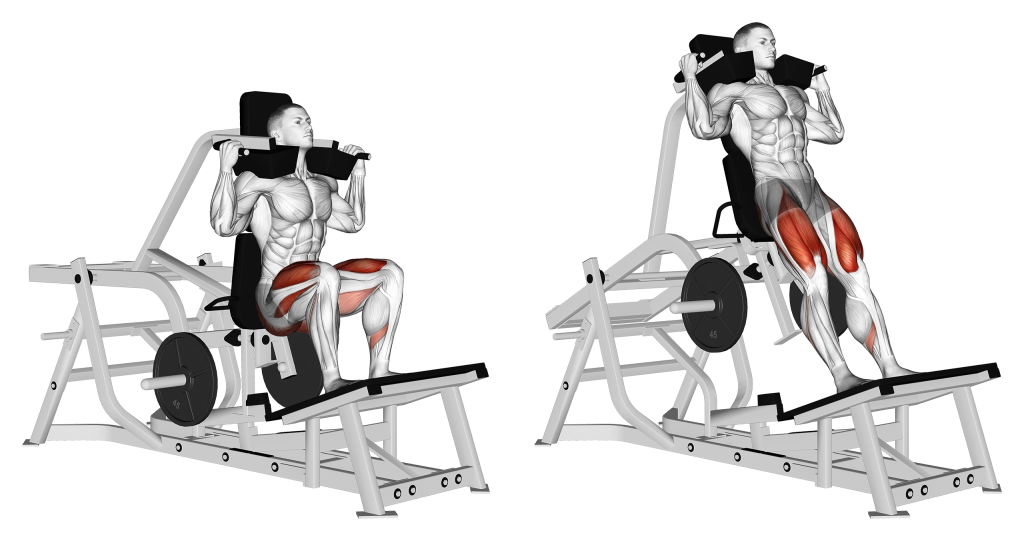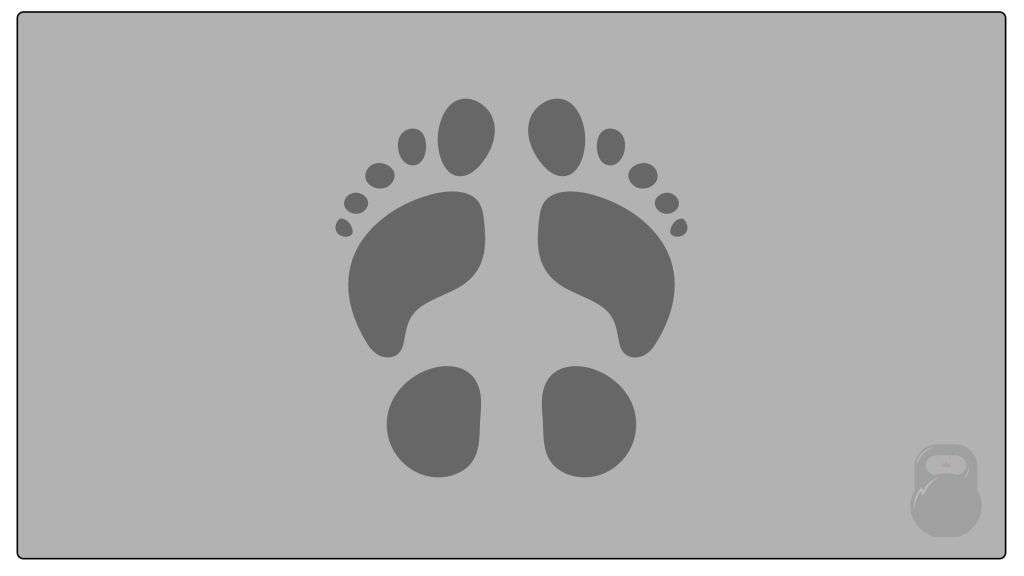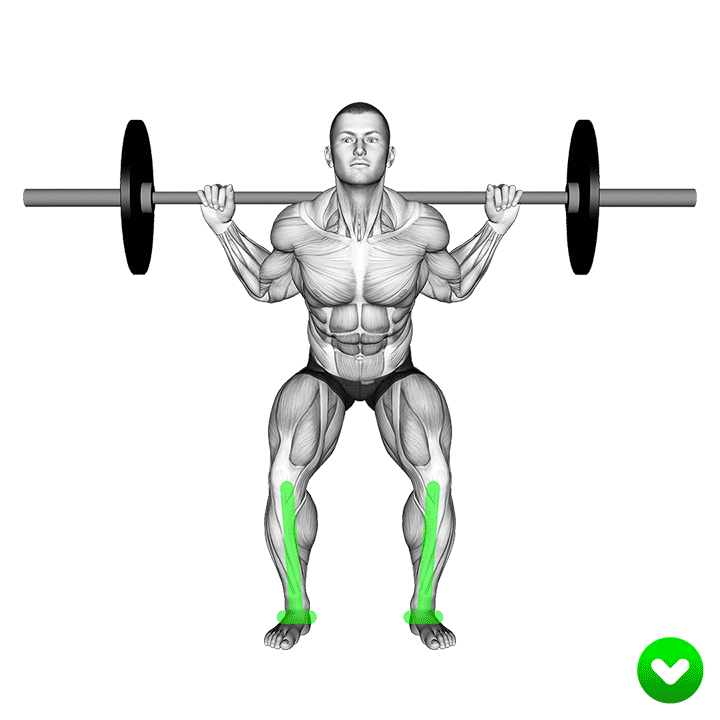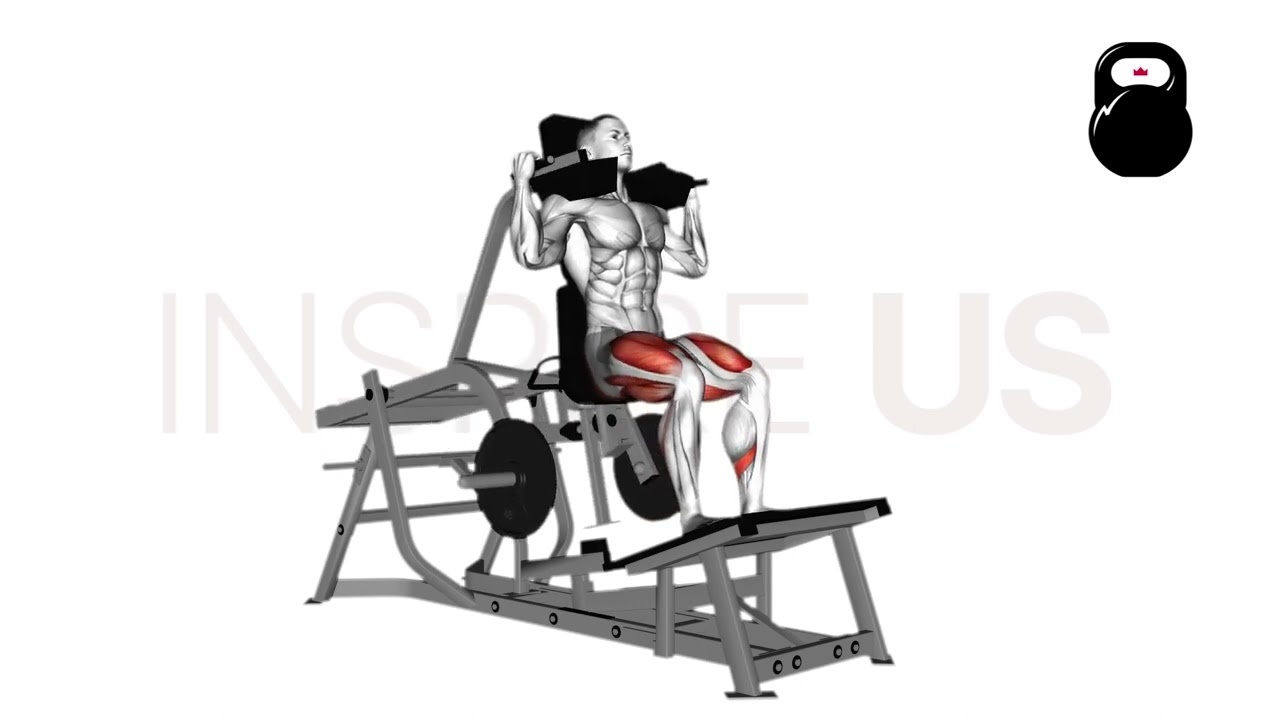V Squat: Muscles Worked and More
The V squat is a machine-based lower body compound exercise most comparable to the quadriceps-focused hack squat - only with greater emphasis on the posterior chain muscles.
The movement itself is quite similar to the sumo squat, though the actual path of the hips and trunk is far more curved and compatible with natural human biomechanics.
In actual training programming, the V squat is often used as a primary compound exercise for building posterior chain muscle mass and strength.
Alternatively, the V squat is also employed as a safer alternative to weighted sumo squats in those susceptible to knee or back injury.
V Squat at a Glance
Equipment Requirements
V Squat Machine, Weight Plates (Optional)
Main Muscles Targeted
Glutes, Hamstrings, Adductors, Quadriceps
Difficulty
Easy
Sets, Reps, and Load Recommendations
3-5 Sets of 8-12 Repetitions at a Light or Moderate Load
How to Do a V Squat
- To perform a repetition of the V squat, the lifter will begin by positioning themselves within the machine, feet significantly wider than shoulder-width apart, toes facing forwards along the baseplate and the shoulder pads pressed against the tops of the shoulders.
- Disengaging the safeties, the lifter then bends forwards at the knees as they drive the hips downwards. As they do so, the upper body should be flush against the pads, the trunk kept angled slightly forwards as the body’s weight is distributed into the feet.
- Once the lifter has descended to the limits of their hip and knee mobility, they then drive through the heels and push the pads backwards and upwards.
- Now returned to their original standing position, the repetition is considered to be complete.
Additional Tips:
The V squat should not be performed to the same depth as a conventional back squat, as it is intended to feature a maximum depth just shy of the hips being parallel to the knees.
Sets and Reps Recommendation:
Because of its shorter range of motion and less mechanically advantageous positioning (for strength output), striking a balance between volume and load is the ideal way to program V squats.
3-5 sets of 8-12 repetitions at a light or moderate load will suffice for general lower body development.
What Muscles do V Squat Work?
The V squat is considered to be a compound exercise, as it targets more than a single muscle group throughout its movement pattern.

Prime among these are the gluteal muscles, of which drive much of the movement and thereby receive the most benefit. However, alongside the glutes are the hamstrings, quadriceps and the adductor muscles along the inner section of the thighs.
Common V Squat Mistakes to Avoid
While the V squat is indeed one of the safest squat variations out there, even experienced lifters should look out for the following common mistakes.
Using a Narrow Stance
The V squat is more reminiscent of a sumo squat than a conventional stance squat, as it is meant to be performed with a significantly wider than shoulder-width stance and greater emphasis on the adductor muscles.

Though it is possible to use a V squat machine with a narrow stance, doing so defeats the purpose of the exercise and essentially creates a hack squat.
This shifts the focus more towards the quadriceps and can increase strain on the knees by some small measure.
Lifters are advised to play around with wider than shoulder-width foot positioning so as to find what best fits their own individual proportions.
Knee Valgus or Legs Caving Inwards
One particularly common issue with wide-stance squats (V squat included) is inward rotation of the legs, as if the knees are collapsing in towards each other.

Inwardly caving knees during a squat can be due to a wide variety of issues relating to positioning, mobility and muscular weakness. However, in the specific context of a completely healthy lifter performing machine V squats, the most likely culprit is simply poor hip, ankle or knee mobility.
Lifters consistently making this particular mistake may see benefit in performing an extensive lower body mobility routine prior to performing V squats.
Rounding the Lower Back
Despite its safety, the V squat can nonetheless be quite dangerous if performed without proper spinal neutrality. The core must be correctly braced throughout the entire set, with the lower back itself kept flat and neutral as well.
Consistently encountering poor lower back neutrality with V squats can either be a sign of weak core musculature or that the lifter may be leaning too far forwards as they descend into depth.
“Pigeon-Toeing” or Inward Toe Angle
As is also occasionally encountered alongside inward knee rotation, lifters may make the mistake of pointing their toes inwards atop the foot plate.
Apart from being significantly less advantageous for force output, performing V squats pigeon-toed leads to a host of issues relating to ankle stability and leg adduction.
In addition to ensuring the feet are set wider than shoulder-width apart, lifters must also keep the toes pointed forwards at the least - a more outward angle aligned with the knees is far preferable, if mobility allows.
Who Should Do V Squats?
V squats are a highly accessible exercise with a very low barrier to entry. Even complete novices to resistance training can safely perform them, provided sufficient supervision is given to proper form.
Of course, like all squat variations, the V squat may be incompatible with individuals predisposed to injury of the knees, hips or lower back. Speak to a medical professional prior to attempting the V squat.
References
1. Coratella, Giuseppe, Gianpaolo Tornatore, Francesca Caccavale, Stefano Longo, Fabio Esposito, and Emiliano Cè. 2021. "The Activation of Gluteal, Thigh, and Lower Back Muscles in Different Squat Variations Performed by Competitive Bodybuilders: Implications for Resistance Training" International Journal of Environmental Research and Public Health 18, no. 2: 772. https://doi.org/10.3390/ijerph18020772

